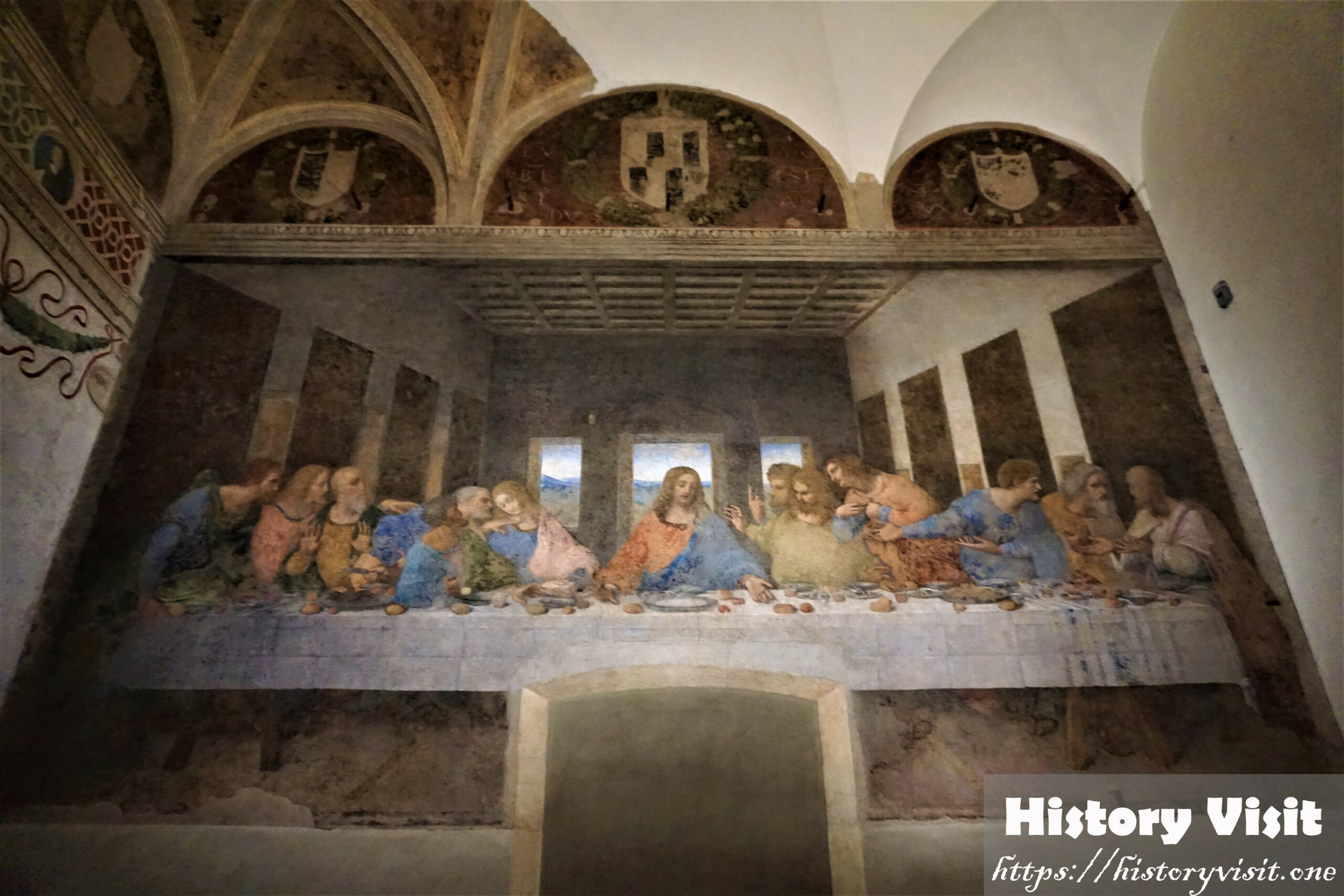Unveiling Leonardo da Vinci’s Masterpiece: The Last Supper Revealed

Leonardo da Vinci’s “The Last Supper” stands as a testament to artistic brilliance and historical significance. This article aims to unravel the layers of this iconic painting, exploring its historical context, technological innovations utilized, and the enduring mysteries that continue to captivate audiences worldwide.
The Historical Significance
Commissioned for the Convent of Santa Maria delle Grazie in Milan between 1495 and 1498, “The Last Supper” portrays the poignant moment of Jesus Christ announcing his betrayal by one of his disciples during their final meal together. Da Vinci’s depiction captured the essence of this pivotal event in Christian history.
Artistic Techniques and Innovation
Da Vinci’s artistic genius shines through in the innovative techniques employed in “The Last Supper.” His mastery of perspective, composition, and his use of the fresco technique, a method of painting on fresh plaster, revolutionized the art world. The precise application of light and shadow, known as chiaroscuro, infused the scene with depth and realism.
Technological Advancements in Art
Da Vinci’s exploration of various materials and his scientific curiosity led to the development of innovative painting techniques. He experimented with different types of pigments and binding agents, contributing to the preservation and longevity of his artworks. His quest for perfection pushed the boundaries of artistic expression during the Renaissance era.
Decoding Symbolism and Composition
The composition of “The Last Supper” intrigues art enthusiasts and scholars alike. Jesus at the center, surrounded by disciples in groups of three, sparks discussions about hidden meanings and symbolism. Each figure’s posture and gestures are believed to convey deeper messages, encouraging continuous analysis and interpretation.
Restoration and Preservation Efforts

Over the centuries, “The Last Supper” faced challenges due to environmental factors and historical events. However, extensive restoration efforts employing advanced techniques have been pivotal in preserving this invaluable artwork. Conservationists and experts continuously strive to safeguard its original brilliance for future generations.
Artistic Interpretation and Religious Context
Da Vinci’s portrayal of “The Last Supper” reflects the religious significance of the moment, capturing the emotional turmoil among the disciples as Jesus reveals his impending betrayal. The painting serves as a visual narrative, evoking spiritual contemplation and inviting viewers to connect with the solemnity of the scene.
The Historical Context of Renaissance Art
During the Renaissance, art experienced a profound transformation, and da Vinci was at the forefront of this revolution. “The Last Supper” exemplifies the era’s shift towards naturalism and perspective, departing from the flat, symbolic style of medieval art to a more lifelike representation of human figures and emotions.
The Fresco Technique and Its Challenges
Da Vinci’s choice of the fresco technique, painting on wet plaster, posed challenges in executing such a monumental work. This method demanded swift and precise brushwork, making alterations difficult once the plaster dried. Despite its challenges, da Vinci’s meticulous approach resulted in a captivating and enduring artwork.
Scientific Inquiry in Artistry
Da Vinci’s insatiable curiosity extended beyond art. His scientific inquiries into anatomy, optics, and mechanics significantly influenced his artistic endeavors. His understanding of human anatomy, particularly the muscles and expressions, enhanced the lifelike quality of the figures in “The Last Supper.”
The Architectural Setting and Spatial Illusion
The architectural backdrop of “The Last Supper” creates an illusion of an extension of the actual refectory. Da Vinci’s skillful use of linear perspective, meticulously calculated to draw the viewer’s gaze towards the focal point, adds to the immersive experience, intensifying the emotional impact of the scene.
Restoration Challenges and Techniques
The preservation of “The Last Supper” has been a continuous effort. Various restoration attempts over the centuries faced challenges in combating deterioration caused by factors such as humidity and war damage. Advanced scientific methods, including laser technology, have been employed in recent restoration efforts to stabilize the painting.

Controversies and Debates
The artistic choices and controversies surrounding “The Last Supper” continue to ignite scholarly debates. Interpretations of the identities and expressions of the disciples, as well as the possible use of symbolism, remain subjects of intense discussion and speculation among art historians.
The Lasting Cultural Influence
Beyond its artistic brilliance, “The Last Supper” has permeated popular culture, inspiring countless adaptations, references in literature, films, and even inspiring other artists. Its enduring presence in popular imagination speaks volumes about its profound impact on society.
The Enduring Mysteries
Despite extensive research, “The Last Supper” retains its air of mystery. Theories abound regarding hidden codes, symbolism, and subtle details within the painting, fueling curiosity and debate among scholars and enthusiasts. The enigmatic nature of certain elements continues to fascinate, inviting diverse interpretations.
Legacy and Lasting Impact
Beyond being a masterpiece, “The Last Supper” symbolizes da Vinci’s multifaceted genius, spanning art, science, and innovation. His legacy endures, influencing not just art but also anatomy, engineering, and diverse fields of study. His holistic approach to creativity inspires generations. As we continue to explore the depths of Leonardo da Vinci’s “The Last Supper,” we uncover not just a painting but a window into history, artistry, and the human imagination.


